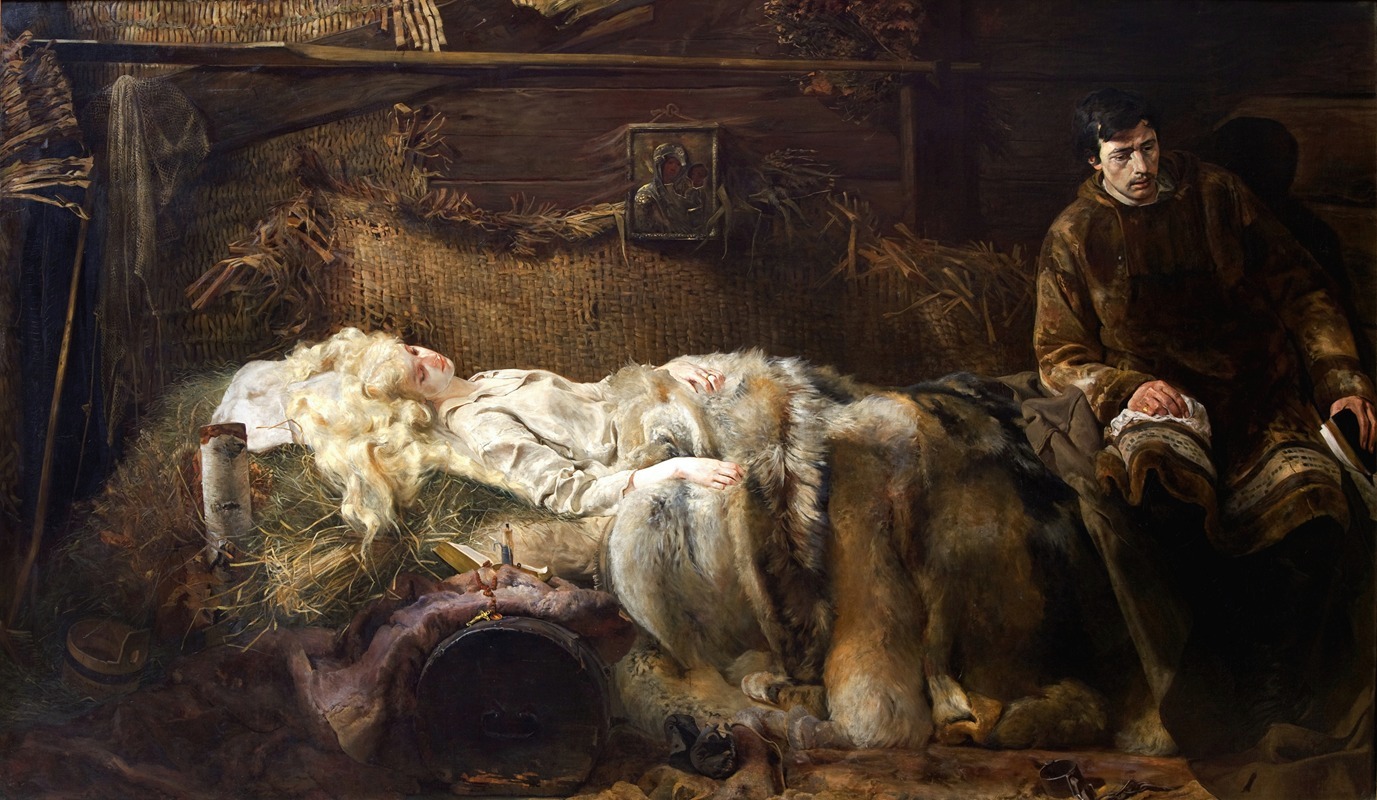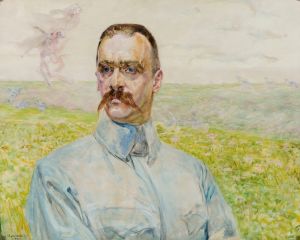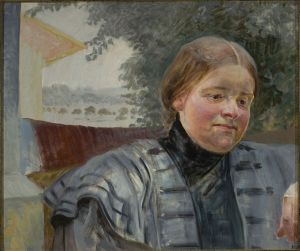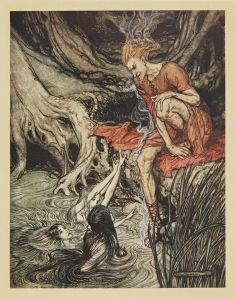
Death of Ellenai
A hand-painted replica of Jacek Malczewski’s masterpiece Death of Ellenai, meticulously crafted by professional artists to capture the true essence of the original. Each piece is created with museum-quality canvas and rare mineral pigments, carefully painted by experienced artists with delicate brushstrokes and rich, layered colors to perfectly recreate the texture of the original artwork. Unlike machine-printed reproductions, this hand-painted version brings the painting to life, infused with the artist’s emotions and skill in every stroke. Whether for personal collection or home decoration, it instantly elevates the artistic atmosphere of any space.
"Death of Ellenai" is a painting by the Polish artist Jacek Malczewski, created in 1907. Malczewski is a prominent figure in Polish art, known for his symbolic and often allegorical works that explore themes of Polish identity, history, and mythology. His style is characterized by a blend of realism and symbolism, often incorporating elements of fantasy and the supernatural.
The painting "Death of Ellenai" is part of Malczewski's broader exploration of Polish Romanticism and national identity. It draws inspiration from the poem "Anhelli" by the Polish Romantic poet Juliusz Słowacki. "Anhelli" is a narrative poem that tells the story of Polish exiles in Siberia, reflecting on themes of suffering, sacrifice, and the quest for spiritual redemption. Ellenai, a character in the poem, represents the tragic and sacrificial aspects of the Polish struggle for independence.
In "Death of Ellenai," Malczewski captures the poignant moment of Ellenai's death, imbuing the scene with a sense of melancholy and transcendence. The painting is noted for its emotional depth and the use of symbolic imagery to convey the themes of martyrdom and national suffering. Malczewski's use of color, light, and composition enhances the dramatic and spiritual quality of the work, inviting viewers to reflect on the broader historical and cultural context.
Malczewski's work is deeply rooted in the socio-political climate of Poland during the late 19th and early 20th centuries, a period marked by partitions and the struggle for national sovereignty. His paintings often serve as a visual commentary on the resilience and spirit of the Polish people, using historical and mythological references to evoke a sense of national pride and identity.
"Death of Ellenai" is a testament to Malczewski's ability to intertwine personal and national narratives, creating a work that resonates with both individual and collective experiences. The painting is part of Malczewski's larger body of work that includes other notable pieces such as "Melancholia" and "Vicious Circle," which similarly explore themes of existential reflection and the human condition.
Jacek Malczewski's contribution to Polish art is significant, as he is considered one of the leading figures of the Young Poland movement, which sought to revive and redefine Polish art and culture during a time of political oppression. His works continue to be celebrated for their artistic innovation and their profound engagement with the cultural and historical issues of his time.
Today, "Death of Ellenai" is housed in the National Museum in Warsaw, where it remains an important piece of Poland's artistic heritage. The painting not only exemplifies Malczewski's mastery of the symbolic art form but also serves as a poignant reminder of the enduring spirit of the Polish nation. Through his art, Malczewski invites viewers to engage with the complex layers of meaning and emotion that define the Polish experience, making "Death of Ellenai" a significant work in the canon of Polish art history.


















